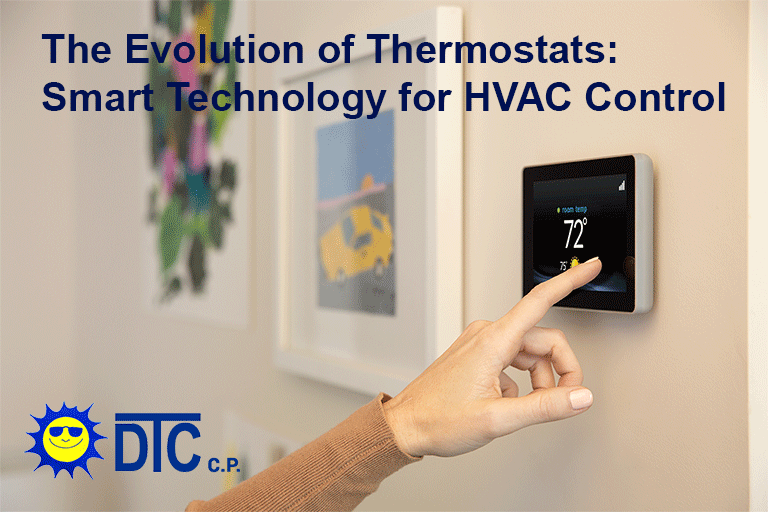
Smart thermostats give you remote access to the temperature control in your home and so much more. In the future, digital thermostats may expand their capabilities to include control of hot water heaters and other appliances as well as your heating system. However, to truly appreciate modern inventions, you need to know where they came from.
The pros at DTC in Georgetown, TX, have researched the history of thermostats, starting with mechanical devices that regulated heat nearly 150 years ago. Smart technology has come a long way since then, revolutionizing HVAC control and giving homeowners ever more freedom and control over their home comfort systems.
The First Thermostats
Although Dutch inventors were creating thermostats for incubators in the 17th century, the first thermostat to regulate home heating was invented in 1885. Albert Butz invented a mercury thermostat used to regulate heating systems, laying the foundation for the sophisticated systems in use today.
Honeywell was the first company to make a widely used commercial thermostat. They were introduced in the 1920s and had an instantly recognizable design. Many systems today still have thermostats with a round design covered with plastic or glass windows to view temperature settings.
The technology continued to advance and, by the 1950s, mercury-based thermostats were replaced with safer bimetal ones. These new thermostats were more reliable and accurate than their predecessors. By mixing two types of metal together, manufacturers were able to achieve greater efficiency and more precise temperature monitoring.
Digital Transformation for Thermostats
Long before computers became mainstream, digital thermostats made setting the temperature easier than ever. In a giant leap for HVAC systems, digital thermostats greatly increased accuracy and precision. Introduced in the 1980s, digital thermostats had microprocessors that gave homeowners flexibility when setting their heating systems.
Programmable thermostats came next and offered remote control over HVAC equipment. Instead of only being able to change the temperature from the thermostat directly, homeowners could now preprogram settings to their preferences.
The Era of Smart Thermostats
That brings us to the modern era, and thermostats are smarter than ever. In addition to remote access, the latest thermostats plug into your home automation systems and have the ability to predict your preferences.
At DTC, we can install a smart thermostat in your home and integrate it into your existing hub. If you need a tutorial, we’ll show you how to connect your smart thermostat to the Wi-Fi and bring up the controls on your phone. With the help of AI, your thermostat can analyze weather forecasts, preferences, and usage patterns and use the information to create a cozy home for your family. You’ll save money on your energy bills and come home to a comfortable environment year-round.
Benefits of Smart Thermostats
There are many advantages of incorporating smart thermostats into your HVAC system. For lower heating and cooling bills and a pleasant home environment, speak to a DTC representative about the top makes and models in the industry. We are happy to consult with you to choose the right system for your home in Georgetown or the surrounding communities.
Advantages of smart thermostats include the following:
- Energy efficiency for lower utility bills.
- Remote accessibility via smart devices and assistants.
- Learning capability that enables your thermostat to become smarter with extended use.
- Seamless integration with your home technology.
In the future, smart thermostats may be able to turn your furnaces, dishwasher, and water heater on and off according to your settings. And, there are many more possibilities as technology is likely to continue to march forward.
Contact the team at DTC today for all your HVAC needs in Georgetown, TX and surrounding areas!
